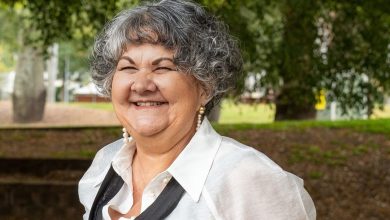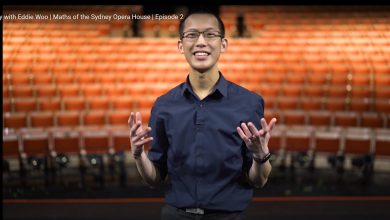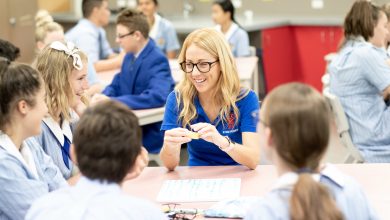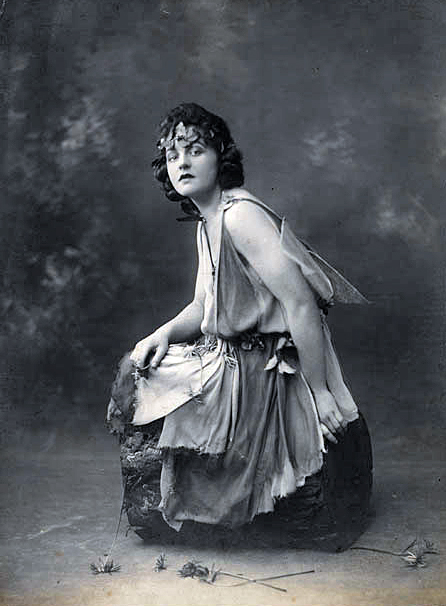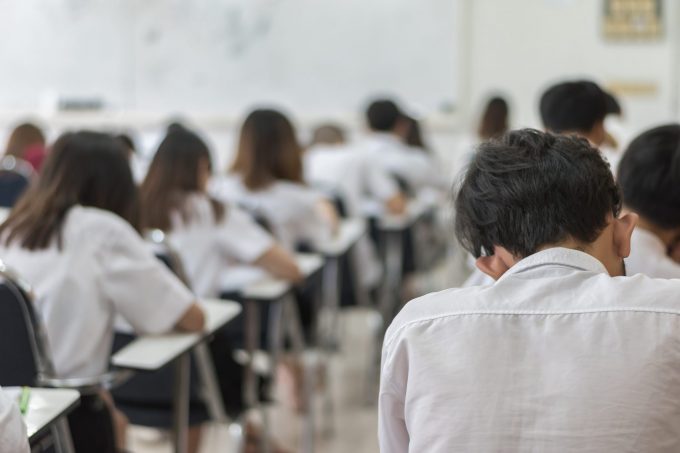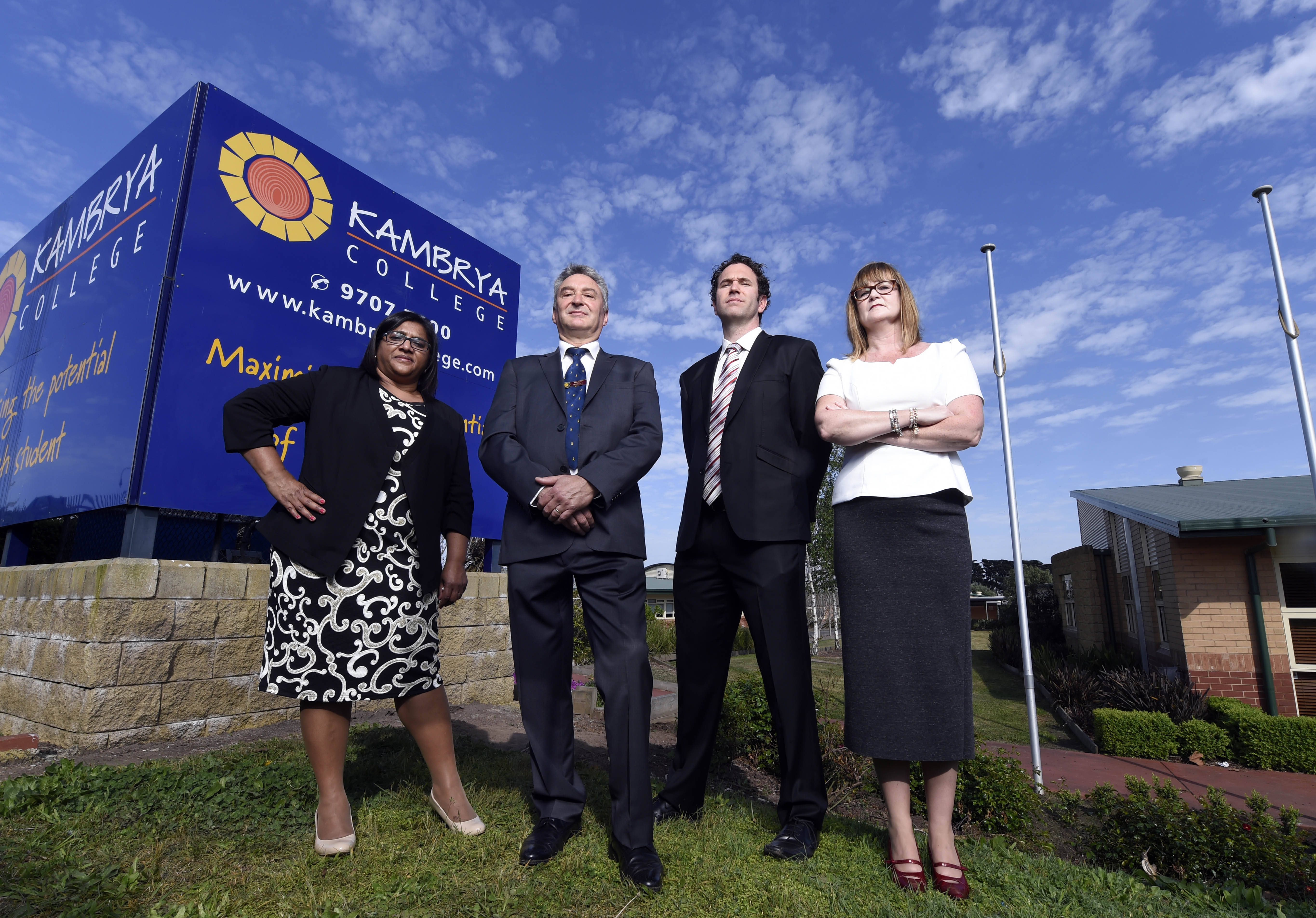
The recent ABC documentary series Revolution School was a ground breaking event in the Australian education landscape. Principal, Michael Muscat shared the story behind the documentary with School News.
Why did we do it?
Early in 2014, I was approached by the CJZ production company about the possibility of participating in a “landmark series” on education in Australia. They were searching across the nation for an ‘average’ suburban secondary school, neither significantly privileged nor underprivileged, that had shown significant improvement. It was at once a tantalising and frightening suggestion. Extensive consultations followed with the leadership team, staff, school council and the Victorian Department of Education. In the end, with some trepidation, we agreed to participate for the following reasons.
Firstly, we believed that Kambrya College had a good story to tell. There is abundant evidence of ‘root and branch’ school improvement in recent years. Secondly, we were convinced that the ABC and the CJZ production company were serious about creating an insightful, ‘non-tabloid’ series with an understanding that neither the school’s, nor any particular individual’s reputation would be damaged. Yes, there would be depictions of every day rough-and-tumble, but the focus would be on the positive outcomes. Thirdly, we would have the opportunity to work closely with a number of luminaries from the University of Melbourne Graduate School of Education.
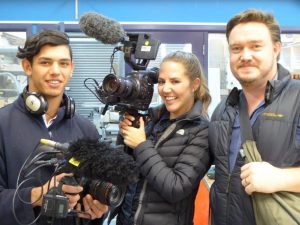
Cameras everywhere
It was a prerequisite to have signed release forms from all staff, students and parents who would appear in the documentary. Obtaining these releases was a big job in itself. Over 90 percent of students and staff were willing to provide signed releases from the outset. It was certainly understood that cameras could enter classrooms only when prior agreement had been made with the relevant teacher. Staff and students grew accustomed to having the cameras around very quickly. Where sensitive issues were captured on film, the production team showed themselves to be responsive to requests I made.
One great outcome for the staff was the fantastic collection of ‘bloopers’ collated by the production team strictly for the enjoyment of staff at our 2015 end of year break up. It was hilarious, and indicative of the trust and friendship that had been built up between the very talented production team and the staff. But I must also say that there is a lovely sense of freedom in 2016 – without the cameras!
The role played by University of Melbourne Graduate School of Education (MGSE).
The MGSE runs a number of networks of schools, which are made up of cross sector, metropolitan and regional schools, keen on improving teaching and learning. Kambrya College became part of one of these networks at the beginning of 2015. There is no doubt the MSGE, ranked in the top ten internationally, is a brilliant organisation to work with, but the following point needs to be made clear.
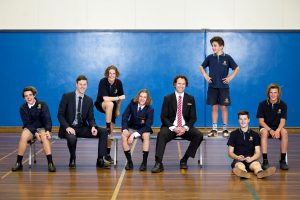
The reality was that Kambrya College had already embedded significant improvement when it joined the MGSE network of schools in 2015. Indeed, the college was in a high state of ‘readiness’ to embark on further improvement in teaching and learning when it joined the network. And this was the great benefit of our connection with the MGSE. Professor Lea Waters guided the piloting of the Visible Wellbeing project which grew out the positive psychology area. The internationally renowned Professor John Hattie provided us with observations and feedback on our approaches to teaching. The MGSE also accessed Dianne Snowball who mentored us in the Independent Reading program, which we believe will build further on the gains our literacy program has already achieved in improved reading results. Dr Bill Rogers illuminated teachers on effectively managing difficult students and classes. These projects are sure to further enhance learning and wellbeing outcomes for our students.
In the narrative of the documentary however, viewers may have gained the impression that Kambrya College was dysfunctional, experts from the University of Melbourne were brought in, and during the course of the year, they ‘fixed’ the college. This is clearly not the case.
We were fortunate to join the network of schools just at the right time to take further wonderful steps towards improve learning and wellbeing in a consistent and comprehensive manner.
School improvement at Kambrya College
By viewing Revolution School, the fact that significant improvement had taken place is certainly evident. However, the long and sometimes excruciating process of improvement in not told in the documentary. Potentially, the hard lessons we have learned about school improvement may be valuable to other schools. It is important, therefore, to provide at least a brief outline of where we were, the steps that were put in place, and the impact of these measures in a number of key areas.
When I became principal in 2008, the college was in a pretty grim place. Our student achievement data was poor. Our VCE results in 2007 and 2008 placed us in the bottom 10 percent of state schools in Victoria. Results for VCE English placed us in the bottom 5 percent. Education Department run surveys of students, parents and staff brought dismal results. Student absenteeism, staff turnover, student suspensions and expulsions were unacceptably high. We had some work to do!
We needed a plan. We chose to adopt the approach to school improvement outlined by Zbar, Kimber and Marshall “How our best performing schools come out on top…” (2008). The principal team collectively put our shoulders to the wheel with a focus on establishing the
Preconditions for improvement:
- Strong and stable leadership with a shared and strategic vision
- Creating an orderly learning environment
- Focusing on what matters most
- Building teacher efficacy
Our first task was to build leadership capacity. To this end, frequent and lengthy principal team meetings and meetings with leading teachers focused on: redrawing school goals, refining plans to achieve them, weathering the implementation storm and just winning over hearts and minds!
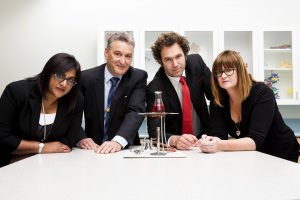
Principals worked ‘shoulder to shoulder’ with middle leaders in a relentless manner to achieve school goals. Of critical importance was the decision to appoint a leadership coach to help build the capacity of our new leadership team. We were fortunate to obtain the services of exceptional leadership coach, Pamela Macklin. The value of leadership coaching is perhaps best illustrated by one of our leading teachers who observed:
“Leadership coaching allows the individual to discuss how their work contributes to achieving school goals, and how to work through challenges they may meet along the way. For time poor leaders, it’s a great advantage to have ready access to this valuable resource in an ongoing manner. Our leadership coach has been with us for seven years now. In effect, it has built a critical mass of minds that are focused on agreed priorities for school improvement.”
Simultaneously, we began work to establish an orderly learning environment. Vertical sub schools (years seven to ten) were set up to ensure all students are well known by a stable team of teachers. These sub schools have become the four pillars of our school. A behaviour management plan was collaboratively developed and consistently implemented. Consistent and supportive processes for managing complaints and unsatisfactory performance of staff were utilised. Strong and visible support was provided by the principal team every step of the way. We ‘got back to the basics’ and focused on what matters most.
For us this meant a number of things. Firstly, we supported the diagnostic use of student achievement data. This was a big step for us at the time, and we were fortunate to have the services of the extraordinary data analysis expert Philip Holmes Smith.
Secondly, well-resourced literacy and numeracy programs were established and these have evolved over time. More rigorous course selection processes to the VCE were implemented and energetic steps were taken to improve the quality of our VCAL pathway and VET options. Strong measures were taken to reduce disruption to teaching programs and a ‘no opt out’ approach to completing class work was consistently applied. Established programs and practices that did not add value were tossed out. We withdrew from the International Baccalaureate Middle Years program. Educational fads were strenuously resisted.
It is probably fair to say that we spent three years of very heavy lifting to improve in these areas, change mindsets and set new cultural norms. It was hard going and often there seemed to be little reward for effort, but gradually the improvement came.
Staff liked the improvement in student behaviour, clarity in school processes, and the sustained focus on school goals. Students showed their greater sense of connectedness to school by dramatically improved attendance and survey results. We were now ready to give building teacher efficacy our full attention.
This work began by introducing the non-negotiable expectation that all staff plan lessons using the template developed by the staff. This was a much more difficult task than some may realise! We collaboratively developed a Kambrya College Model of Teaching Instruction which has been modified on several occasions. Professional learning teams were implemented with a focus on using data/assessment to inform lesson planning, setting clear, precise and visible learning goals every lesson, differentiating teaching. The teams also provided opportunity for collaboration on effective teaching strategies and moderation to ensure consistent teacher judgements. Over the next couple of years, in-house professional development for teachers was designed to build teacher capacity in these areas.
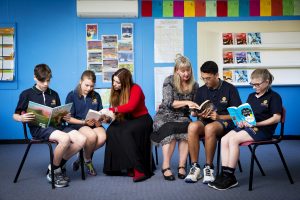
By 2014-15, some remarkable improvement has been achieved. Our VCE median study score has been among the top 25 to 30 percent of state schools over the past four years. The median study score for English; from bottom 5 percent in 2008 to top 20 percent of state schools in 2015. According to NAPLAN data, Kambrya’s students have been growing above the state average academically. Testing year seven students in 2012 and the same students in year nine two years later, revealed learning progress above the state average, by 24 percent in reading, 17 percent in grammar and punctuation, and 13 percent in numeracy.
In the Attitudes to School Surveys conducted by the Victorian Department of Education, students rated Kambrya’s teacher effectiveness at 15 percent in 2008. This had grown to 80 percent in 2015. The stimulating learning environment was rated by students at just 18 percent in 2008, but had grown to 74 percent in 2015. School connectedness was rated at 10 percent in 2008, which fell in the lowest 4 percent in the state. In 2015, students rated their connectedness at 75 percent – among the highest 25 percent in the state. In Parent Opinion Surveys the general satisfaction of parents stood at 35 percent in 2008. In 2015 it was 79 percent. In 2008 the school expelled 12 students, and since 2013 there have been no expulsions. Kambrya College has increased its year seven intake from 155 students in 2015 to 330 students for the coming 2017 school year.
The story of this improvement, lightly touched on above, is implied rather than explained in Revolution School. Yet this is what makes us a ‘revolution school’. But for me, this takes nothing away from the documentary. For the first time, Australians have been given a window into a large suburban secondary school that is functioning very well. Above all, I am gratified by the fact that the nation has seen the complex, challenging and incredibly valuable work done by teachers. And by all accounts, this has been incredibly well received by the community.

